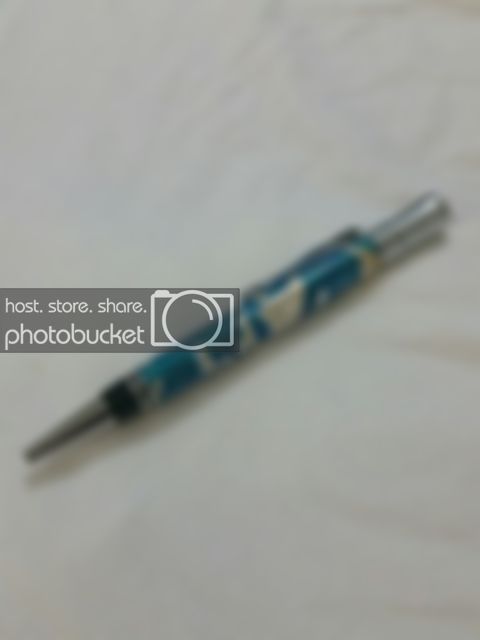Thanks guys.
I need to work on a few things... Next time I need to paint the tube and work on making even cuts.
Just get it close, especially if it's chippy. Even cuts are overrated unless you NEED to finish it with a skew, such as with segmenting woods that bleed colors into each other or working with hybrid material blanks (metal and wood or stone and wood, though stone has an entirely different means of inlay).
Then grab some coarse abranet 120 grit or whatever ya got that'll take material medium fast and hold it above and below your spinning barrel ... let the sanding material take out all the lumps and bumps and give you a very SMOOTH curve on the barrel, or you can just back your sanding material with something flat to give a nice flat surface to your blank.
I often hold my abranet at an angle to give an even curvature to the ends of my blanks as I work them down to final dimensions... As I get close to what I want, I work my way up to 400 grit abranet before I go to 600 grit wet/dry and then 1000 grit wet/dry. All this sanding is done dry.
At this point, if I'm working with wood, I'll clean the surface with rubbing alcohol (91%), then apply Minwax stain and seal (natural), followed by my first coat of CA. 6 to 9 coats of CA and back to finishing process as though I were dealing with acrylic.
Wet-sanding for acrylic starts at 1000 grit, to make sure the last of the bumps are all gone, with lateral sanding to remove radial lines. Then I jump to 3200 grit micromesh and proceed rapidly to 12,000 stopping at 3200, 6000, and 12,000 to sand laterally. Polish with PlastX, then give it a coat of Turtle Wax.
I have other posts that deal with stone inlays and stone working.




